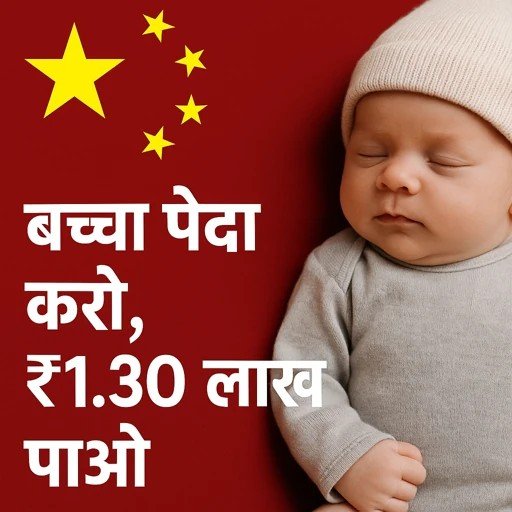Opposite system from India: Government will give ₹ 1.30 lakh for producing a child in China
Opposite system from India: Government will give ₹ 1.30 lakh for producing a child in China
China's opposite system: Government help is getting on childbirth

While the population of India is at the top of the world and family planning is being emphasized in government policies, China is now forced to pay its citizens to produce a child.
Recently, the Chinese government announced that it would provide financial assistance of up to ₹ 1.30 lakh (13,000 yuan) on the birth of every newborn child. This step has been taken in view of the falling birth rate and rising elderly population in China.
📉 Early effect of Forest Child Policy
China implemented the One Child Policy in 1980. Its purpose was to control rapidly growing population. However, the long -term impact of this policy proved to be quite negative:
Heavy fall in birth rate
Female-female ratio imbalance
Decline in labor power
Heavy increase in the number of elderly
According to data:
Year Birth Rate (Per 1000) Elderly Population (%) 2016 12.95 10.5% 2021 7.52 18% 2024 6.10 21%
👵 21% population elderly - crisis deepened
In China's total population, 21% of people are now over 60 years of age. This means that the number of people working in the country is decreasing, while the burden of pension and health services is increasing.
Major concerns:
Huge shortage of workers
Older burden on economy
Pressure on health services
Lack of youth in the military and technical sector in future
💰 New encouragement: produce a child, get money
Various provinces of China have now introduced new schemes to encourage population. Major benefits include:
Financial assistance up to ₹ 1.30 lakh per child
Maternity and paternity holiday increase
Tax exemption
Free education and medical facilities
Priority in Housing Schemes
All this is happening in a country that had once punished for producing a child.
🇮🇳 Difference in population policy of India and China
Side India China Policy Family Planning Population Economic Assistance Limited (for poor class) universal incentive birth rate stable (2.1) continuously falling (1.09) elderly percent
While the number of youth is more in India and unemployment is a big problem, China is struggling with shortage of workers.
🌏 global effects
This population crisis of China is not just its internal matter. It will also affect the global supply chain, industry, and economy.
"If there are no workers, then China's manufacturing strength will weaken, which will affect the opportunities of countries like India." - Global Economic Experts
🧠 Opinions of experts
Pro. Lee Venling (Beijing University):
"The problem that the One Child Policy was to stop, now the same policy has pushed the country towards the population crisis."
Dr. Anuj Sharma (Indian Population Specialist):
"India needs to learn from China's mistake. The unbalanced policy can bring a long -term crisis in the society."
📲 Public reactions
On China's social media platforms, people are making fun of this scheme as "Money for Babies". At the same time, some people are calling it a harsh but necessary decision of the government.
"Now the time has come that China says - population is power." - A Chinese Twitter user
🧾 conclusion
Where earlier population was considered a burden, now it has become the strength of the country. China's decision to give ₹ 1.30 lakh shows that the forced policy of population control can be long -term harmful for both society and economy.
India should make its youth resources educated, skilled and productive so that it can convert its population profit into economic gain.